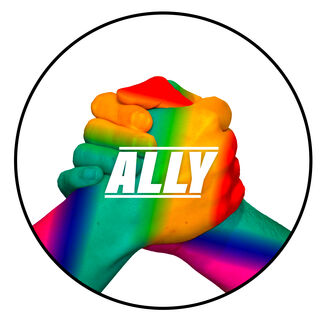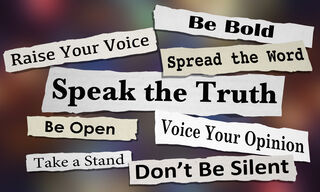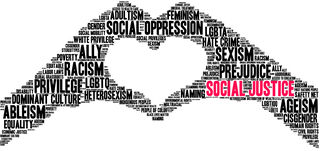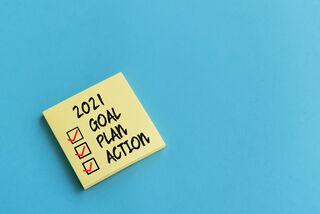
This post is co-authored with Ulash Dunlap, LMFT. A licensed Marriage and Family Therapist, Ulash practices in San Francisco. Her areas of interest include supporting BIPOC communities, anxiety management, and individuals experiencing transitions. Ulash is a full-time faculty member in the MA Counseling Psychology Program at the Wright Institute in Berkeley, California.
New Year’s resolutions are a tradition that promises renewal and a better way of doing things. With so much injustice going on in the world, the need for effective allyship continues in 2021. You see racism, sexism, ableism, homophobia, religious persecution, xenophobia, or ageism in action. How can you help? Turn your resolutions into allyship for others.
Allies use their privilege to advocate on the behalf of others who don’t have the same power afforded to them. An ally stands up for others and brings voice and visibility to the struggles of the marginalized. We don't know the specific moments when allyship will be required of us. The call to action pops up so quickly and often unexpectedly, but you can be ready for these moments by building a solid allyship table to stand on.
So let’s get to work and build an allyship table with the following four legs: (1) cultural humility, (2) knowledge, (3) speaking up, and (4) action. This table framework cultivates allyship that is effective, compassionate, and built for long-term impact.
Leg 1: Cultural Humility
To be an effective ally, it is essential to be culturally humble. You are not better than the person you are hoping to help. Common mistakes that prevent true allyship include acting like a savior, dominating the conversation, and taking over in a way that disempowers others. These errors can unintentionally harm those you are trying to help.
Your culture may be different than those you want to help, but it is not superior to that other person’s culture. Practicing cultural humility will allow you to be a partner in another’s struggle. Consider starting a cultural humility journal that invites honest reflection. When have I thought I was better than someone else, and why? What is getting in the way of me being helpful to others different than me? Read books to help expand your understanding and implementation of cultural humility.

Leg 2: Knowledge
Read, read, read. Gather as much knowledge as you can through different sources. Currently, there are so many good books and podcasts on how to be a better ally. If you take a look at the New York Times bestseller’s list over the past few months, many of the fiction and non-fiction books focus on different racial identities, historical events, current racial injustices, as well as political and societal issues.
Reading about different cultural and ethnic groups, history, and political viewpoints helps us challenge our biases and learn about the current issues and experiences for different communities. Books such as How to Be an Antiracist by Ibram X. Kendi helps the reader to understand the most important issues on race and inequities for allies. There are resources for readers who identify as White as well as books for readers that identify as Black, Indigenous, and Person of Color (BIPOC). Some practical ways to be a better ally and keep learning can also include joining or starting a social justice book club or sharing ally books with your workplace, colleagues, faith groups, and other members of your community.

Listen, listen, listen to podcasts. If you are an auditory learner or prefer listening to information, there are lots of great podcasts on ways to be a better ally. These podcasts include content from community members and professionals on the current racial issues in our country, including personal stories, information, and ways individuals can be effective allies.
Yes, you can ask people about their experiences and knowledge, but for community members that have experienced injustices, it can be exhausting to answer people’s questions about their experiences and how to be a good ally. Increasing our personal knowledge by learning about our own and others' cultural and racial histories gives us a better understanding of who we are, our biases, and what further individual work has to be done to be a better ally.
Leg 3: Speaking Up
If you remain silent, even though you are culturally humble and culturally informed, your allyship table remains incomplete and wobbly at best. Your voice needs to be heard.

Speaking up can take many forms: initiating a dialogue after a microaggression occurs, standing up for a stranger being mistreated, and issuing an anti-ism statement at your place of work or within professional organizations. Personalizing communication is an impactful way to be an ally. Explicitly ask the person you are trying to ally for, “How can I help?”
When addressing the person or people you are confronting, you do not need to go on the attack per se. You can situate yourself to them, who you are, why you care, what you want them to do instead of what they are doing right now. This approach can prevent othering and increase change.
Anchor yourself in your values (whether it be courage, integrity, compassion, empathy, or others) to vocalize and bring light to the harm you are trying to change. To learn more about ways to speak up and engage in constructive conversations, check out It's Time to Talk and Listen and How to Talk to the Other Side: Finding Common Ground in the Time of Coronavirus, Recession, and Climate Change.

Leg 4: Action
While words are an important part of allyship, action needs to accompany it. Allyship without action can feel like lip service. Action steps may look very different for each of us. However, whatever the form, action is a crucial fourth leg of a sturdy allyship table.
Before taking any kind of action, reflect on: What is important to you? What are the current injustices taking place? Who is not at the table when it comes to making decisions at work/school/community/government? After reflecting on the reasons for taking action, here are some examples of action steps you can take:
- Influencing your religious institution, work environment, or other communities you are a part of — Share articles or information on a specific inequity you have noticed (for example, since September 2020, more women, mothers specifically, have left the workforce). Sharing materials can help your community be more informed about current issues to help identify the inequities and collaborate on problem-solving. Review the policies, mission statements, and initiatives of the groups you belong to; advocate for diversity, equity, and inclusion in these important documents.
- Joining online causes and protests — Once you have figured out what you are most passionate about, research local and national organizations and causes you can support. During the pandemic, you may not feel comfortable supporting in-person causes. You can support online causes, such as anti-racism, Black Lives Matter, and anti-poverty.
- Writing to local officials and members of congress — You can email or request an appointment with your local board of supervisors or congress members regarding a matter that is important to you. Sharing your thoughts and observations, as well as any recommendations and solutions, helps your elected officials understand the community's needs and keeps them current and in touch with the issues.
- Running and volunteering for a local board and public office — Having a seat at the table at your local boards, such as the behavioral health commission, school, and transportation boards, can be another way to advocate for your community to help create local policy change and support your community.

We hope these examples provide helpful tips for how we can take individual and collective actions. For some, it may not be safe to take action due to being fired at work or the threat of physical and/or verbal attacks. Remember, small actions are just as important as the larger actions we take. However, ongoing action is essential and needed to support long-term change.
Many people lament that 2020 was the worst year ever. Let’s work toward making 2021 better by helping others with our humility, learning, words, and actions. Be an ally that stands on a strong table and elevates the needs of others!
References
Kim, A., & del Prado, A. (2019). It’s Time to Talk (and Listen): How to Have Constructive Conversations about Race, Class, Sexuality, Ability, & Gender. Berkeley, CA: New Harbinger Publications.
Kendi, I. X. (2019). How to be an antiracist.
Wilhelm, K. & Hoffman, N. (2020). How to talk to the "other side": Finding common ground in the time of coronoavirus, recession, and climate change.




